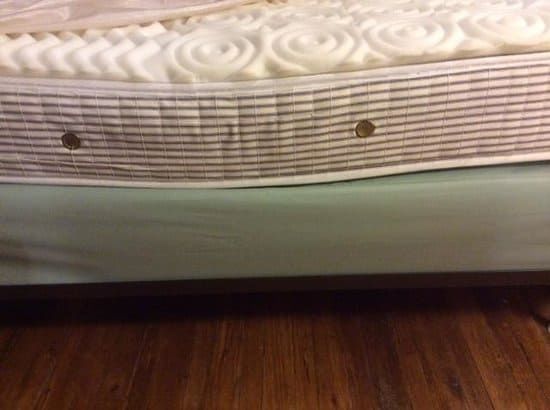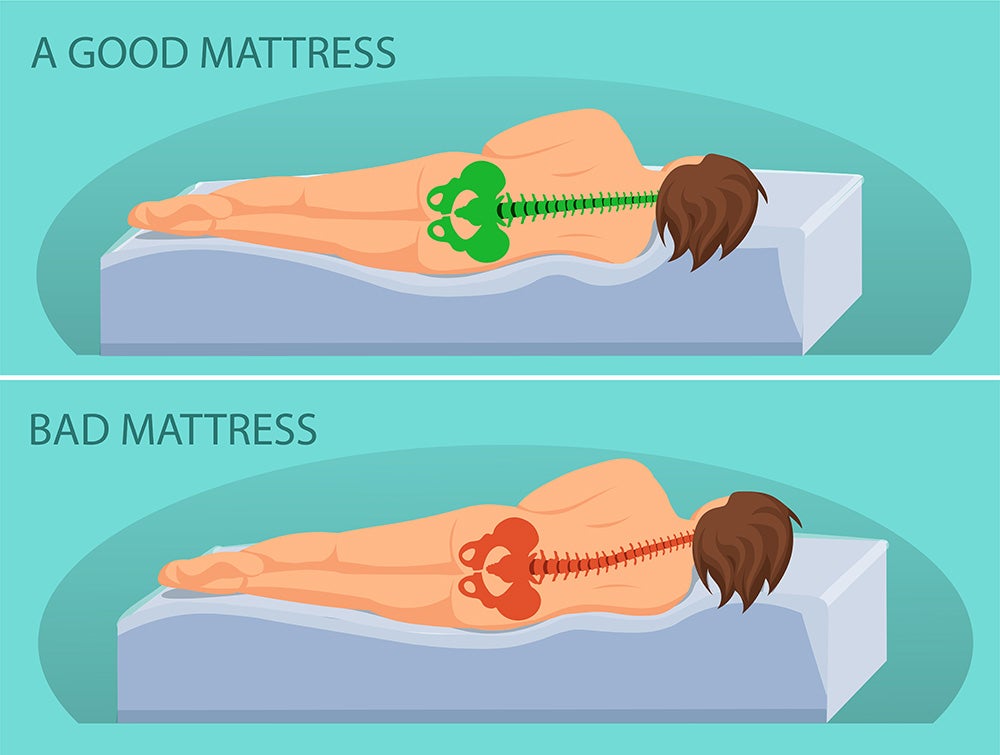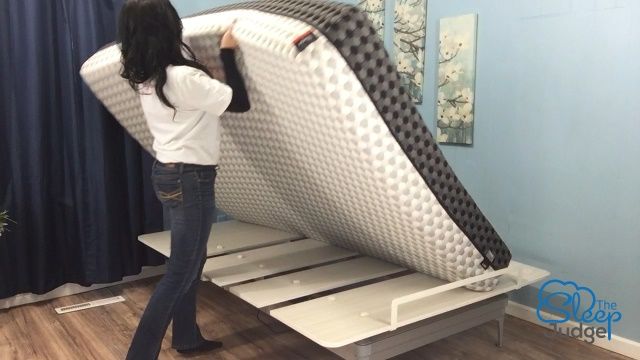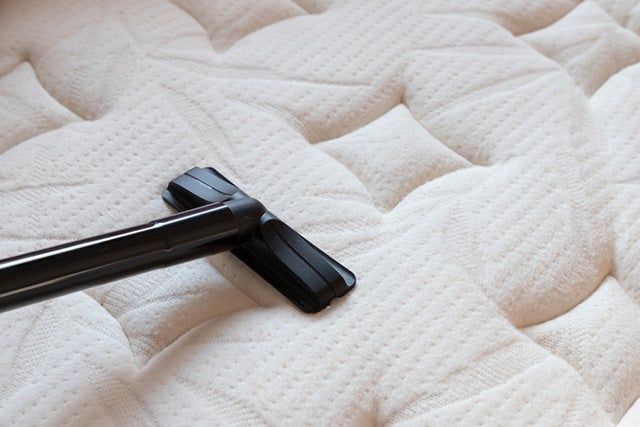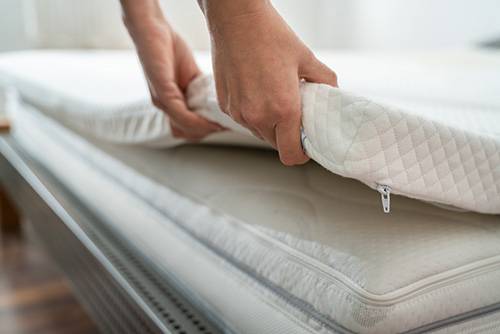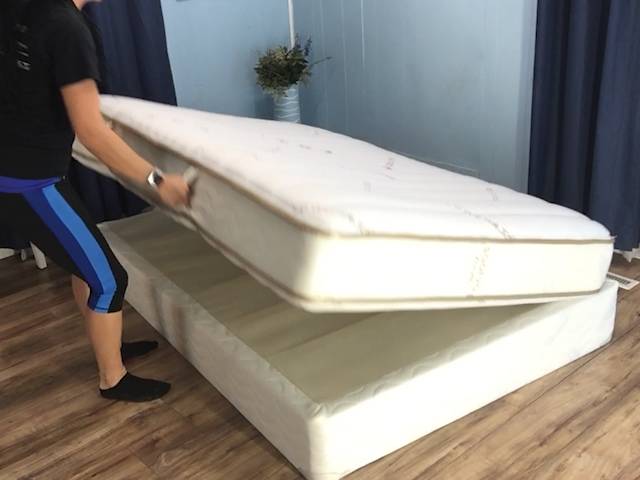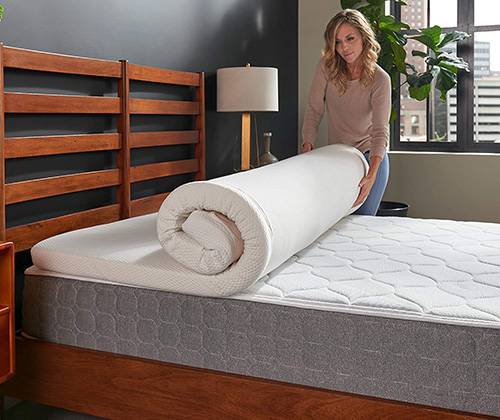When you buy a new mattress, it’s probably full of loft and shape, white and comfy. That’s what makes a mattress so comfortable to sleep on. Nevertheless, your mattress cannot look and feel like this forever.
The more you use it, the weaker its inner stuffing and structure become, and eventually, this can create sags. Now, sags are no fun to sleep in, nor are they very appealing to see, but they are not the end of your mattress that useful life.
You can still make a droopy mattress work, and we’re going to find out how.
You might want to read: What Are The Best Mattresses for the Money?
What Makes Your Mattress Sag?
Mattresses mostly sag due to natural wear and tear. The more you use it, the more shape it loses. That’s just how it works. Sagging is more common and happens quicker in 100% foam mattresses, or mattresses that use any kind of foam layer.
As pressure is applied to the foam every night, it becomes harder and harder for the foam to bounce back, and eventually, it simply sits in the shape of your figure.
The same occurs with an innerspring mattress or hybrid. Foam layer aside, after a while the coils at the bottom of the mattress lose their tension. Once this happens, they’re not so great at supporting the weight of your body anymore.
Sagging will happen where pressure is applied most. For back and stomach sleepers, the pressure is quite even over the surface. For side sleepers, there is greater pressure applied near your waist and shoulders.
If weight is applied unevenly over the mattress surface, then it’s going to sag. This happens a lot to edges when people sit there or when they sit upright in bed.
Sagging mattresses don’t provide the support you need at night, since the surface and strength are uneven and awkward now.
How Can You Tell When Your Mattress is Sagging?
When sleeping on the right mattress, it should be easy to fall asleep, to be comfortable, and to wake up refreshed and energized.
A mattress that has lost its comforting support is not going to provide you with any of this. However, since you’re the one sleeping on it every night, you might not notice it sagging. Instead, here are some other signs you can look out for which could indicate the mattress is sagging.
1. You’re sleeping better in other beds than yours. This means they’re more comfortable than your bed, and that’s not a good thing.
2. You’re waking up with much more pains, stiffness, and aches than you are with relief. This indicates that your mattress is no longer supporting your body at night.
3. There is an increase in allergic reactions at night. This is because dust, dirt, bacteria, and more can collect easier on an old mattress. If your mattress is old, most likely it’s also sagging.
4. If you have an innerspring or hybrid mattress, keep an ear out for the springs. If you can hear them, your springs are losing tension and straining under your weight.
5. Finally, keep in mind the average age limit for mattresses. By the time you hit 7 years, you should be looking for these issues rather than waiting for them to happen.
Does a Sagging Mattress Affect Your Sleep?
Of course, it does! That quality sleep you lose because of a sagging mattress is irreplaceable and never coming back!
There are a multitude of health issues you can also develop if you insist on sleeping on a sagging mattress. There are dust mites that will find your old mattress a wondrous home to snack on your body oils and dead skin cells.
If you have allergies, then they pose a problem. If you don’t, then don’t risk it since you can develop an allergic reaction to them!
A sagging mattress can trigger aches and pains in the body which can become chronic if you’re sleeping in the same conditions for too long. Back pain is inevitable since there is now an unnatural dip your back is contouring too. You end up waking up stiff and sore rather than relaxed and refreshed.
Nothing is worth sleeping uncomfortably, so there are two ways to go about this: fix your sagging mattress or buy a new one.
When is it Time to Replace Your Mattress?
Quick fixes aren’t going to last forever, and fixing a sagging mattress is a quick fix. Once you realize no tips or tricks are going to help you, it’s time to consider purchasing a new mattress. Most people buy a new one after 7 years of using the same one.
This is the standard lifetime of mattresses (all types) and time served well. Having to buy a new one sooner could be the result of a faulty product.
Be sure to buy one which meets all your mattress requirements: it’s either plush, firm, or the perfect in between, it’s the right size for your bed frame, it comes with a warranty, and it’s the mattress type you’re looking for. If it meets all of these, then you can enjoy your new purchase of a mattress in peace.
How to Fix a Saggy Mattress
Now that we’ve gone over the reasons behind your mattress sagging and the consequences of it, it’s time to dive a little deeper and consider some things we can do to fix your saggy mattress.
First and foremost, you have to remember that these solutions are temporary, and they’re not going to allow you to use your sagging mattress forever.
Tip 1: Using Pillows
One of the simplest and easiest ways to improve your sleep is by using strategically placed pillows. Some people place pillows underneath the mattress in the area where it’s sagging. This returns that necessary life and evens out the sleeping surface.
Otherwise, people simply place pillows underneath their knees and back before they sleep so their spine is aligned.
Tip 2: Flip the Mattress
Flipping your mattress over is one way you can keep using your mattress without feeling the indentation. The other side hasn’t become droopy and soft, so you can enjoy this side for as long as it lasts. The other side, however, is going to last for half the time your first one did.
Tip 3: Move the Mattress Around
You can turn your mattress, so the indentation is on the other side of the bed or at the foot of the bed instead of the top. This lets you sleep on the firmer parts for a while.
Tip 4: Vacuum the Top of the Mattress
Yep, this works! Vacuuming the top of your mattress holds two benefits: it cleans the mattress, and it smoothes out any lumps and bumps that are developing! It’ll prolong the usable life of your mattress.
Tip 5: Use a Mattress Topper
If the mattress underneath you is sagging, but can still be used as a functional base, then one quick fix is to purchase a mattress topper. A mattress topper is a thin layer of padding that can be used as a temporary bed top to your old mattress.
The structure underneath can support you while you have a firm and even surface to sleep on, just like before.
If none of these techniques work anymore to provide comfort to your uncomfortable bed, then it’s time to perhaps consider a new mattress.
How to Prevent Sagging?
Once you buy a new mattress, you’ll want it to last for as long as possible. These are some tips you can keep in mind about preventing sags from developing in your new mattress.
Tip 1: Rotate & Flip the Mattress
Keep moving the mattress around so all parts of the mattress are being used to their fullest and no one part is experiencing more pressure than the rest. Flip it over every two months and rotate it every month in between so all the surface areas of the mattress encounter the same amount of pressure for the same amount of time.
Tip 2: Use a Mattress Topper
That’s right, using a mattress topper from the get-go is an easy way to prolong the life of your mattress. It’s also a much cheaper investment if you need to replace a mattress topper rather than having to replace the entire mattress.
Tip 3: No Sitting or Jumping on the Bed
Keep the kids at bay from jumping and playing on the bed, since this applies a lot of unnecessary pressure on your bed. Try not to sit on your bed either, whether it’s on the edges or in the middle since this creates indentations which won’t go away.
You might be interested in: Ultimate Mattress Buyers Guide
Conclusion
Your comfort is your responsibility, your privilege, and your concern. No one else is going to look out for your comfort, so never hesitate to do something about it. A sagging mattress is the first warning sign that your mattress is getting old.
While there are temporary ways to fix this, you’re going to have to start considering a new mattress, and now is better than never. Use the extension period you get from these quick fixes as the window to look for a new mattress.
Be sure to leave a comment if you know any other quick fixes and share this article with others who are not ready to give up on their mattress yet. And for more helpful tips on mattresses check out our guide to how to clean a mattress in 4 easy steps!
Photo credit: tommaso79/Shutterstock; Andrey_Popov/Shutterstock;
fizkes/Shutterstock; rostock-studio/Shutterstock;
Switlana Sonyashna/Shutterstock; pointstudio/Shutterstock;
Ratchat/Shutterstock; Andrey_Popov/Shutterstock;
Dmytro Zinkevych/Shutterstock; Prostock-studio/Shutterstock

